Positive Scenario for Modi’s India “Acts East”
Negative Scenario for Modi’s India “Acts East”
Manish TewariIn the past eighteen months, the prime minister of India has travelled abroad thirty times roughly translating into two overseas visits a month. In the next two months another seven trips are on the agenda. Are there any substantive upsides for India of these outings? In this assessment, I raise concerns about the value of this diplomacy, beginning with ties to South Asia, turning next to Afghanistan and Myanmar, then to China and Japan, subsequently to the United States, and finally to the United Nations. Looking ahead, I see a scenario of unmet promises and disappointing results in policies toward all regions of the world.
India’s Neighborhood
In the initial flush of victory in May 2014, Prime Minister Modi invited all the South Asian Association for Regional Cooperation (SAARC) members and regional leaders to his inauguration and triumphantly proclaimed a neighborhood first policy. In pursuance of that, he visited Bhutan, Nepal, Sri Lanka, and Myanmar. Yet, the results have been disappointing to say the least. The relationship with Nepal today is almost stretched to a breaking point, with the Nepalese constituent assembly ignoring India’s concerns. There is reason to believe that the main reason for New Delhi’s anger at Nepal is not so much the denial of equality to the plains people and other indigenous inhabitants, but the refusal of the Nepalese leadership to formally declare Nepal a Hindu Rashtra, which the ideological mentor of the ruling Bhartiya Janata Party—the Nagpur based Rashtriya Syamsewak Sangh (RSS)—ostensibly wanted. The Nepalese enshrined secularism in their constitution, notwithstanding the creative spin that may have been put on the concept to mollify the forces of right reaction in New Delhi. From closing the border crossings to fulminating against Nepal in the United Nations Human Rights Committee, the current administration has crossed a Rubicon never before breached by any government in New Delhi. If today Nepal is looking towards China for fuel, food, and diplomatic support, New Delhi has no one but itself to blame for the drift in the relationship.
The drift of both Sri Lanka and the Maldives into the Chinese orbit has only been exacerbated with the advent of this government. The Maldivian president has snubbed New Delhi by continuing the persecution of the former president Nasheed, who sought refuge in the Indian Embassy. The incarceration of the serving vice-president for an alleged plot to assassinate the incumbent president, the declaration of emergency now thankfully lifted, and growing Islamism on the island nation (with ISIS finding resonance among Maldivian youth) point to an explosive cocktail, where the ingredients are not to the Indian government’s liking; to its regret, it has no control over the mix. Sri Lanka is continuing with the policy of allowing docking facilities to Chinese naval assets. China has replaced Japan as the primary donor to it.
Pakistan is a case of the prime minister’s left hand not knowing what his right hand is doing. In the span of his first year, he invited Nawaz Sharif to his coronation in May 2014 then three months later cancelled foreign secretary level talks because the Pakistani high commissioner met the Hurriyat. He then sent his foreign secretary on a tour of South Asia to find a fig leaf of an excuse to land in Islamabad to resume the dialogue. It was followed by the ecstasy of Ufa in Russia, on the sidelines of the BRICS summit, with an agreement for dialogue at the level of national security advisors. However, even before the ink had dried on the joint statement that was read out by the two foreign secretaries, the world witnessed the riotous exhibition of the Indian foreign minister and the national security advisor of Pakistan playing verbal kabbadi (a contact sport like American football or rugby) over the airwaves.
The latest bout played out at the United Nations, with Prime Minister Nawaz Sharif raising the Kashmir bogey once again during his speech to the General Assembly. India retaliated with a video that portrayed in graphic detail the atrocities being perpetrated on the people of Pakistan-occupied Kashmir by Pakistani security forces. The video went viral on the Internet.
All these shenanigans have once again ensured the hyphenation of a relationship that took the United Progressive Alliance ten long years to de-hyphenate. A classical example of this process was the successful consummation of the Indo-US Civil Nuclear deal despite stiff opposition by Pakistan. The Bush administration clearly told the Pakistanis that there is no equivalence or parity that the United States is obligated to keep between both countries, even on strategic issues. From the sublime to the ridiculous is the only expression to describe Modi’s handling of the Pakistani interface. There were expectations that during the prime minister’s recent visit to Srinagar he would extend an olive branch to Pakistan just as Vajpayee had done more than a decade ago. However, he was unable to surmount his ideological blinkers to attempt a modus vivendi that would have thawed the atmosphere.
In Afghanistan, India is not even a player after the withdrawal of the NATO-led International Security Assistance force in the December of 2014. Not only is the government of President Ghani and Chief Executive Abdullah Abdullah leaning towards Pakistan, but even negotiations between the Afghan government and the Taliban are midwifed by the Inter-Services Intelligence (ISI). Serving and former senior US officials bluntly and publicly articulate that they see India as a part of the problem and not the solution in Afghanistan. A former US official, who has served in senior positions across administrations, on a visit to New Delhi recently after spending time in Kabul, when asked about India’s absence from the 2+2 dialogue format around Afghanistan, said it in as many words to a roomful of Indian strategic thinkers and policy makers.
Similarly, with Myanmar taking its first baby steps towards democracy, the cross-border raids to neutralize Naga insurgents and the bellicose spin put on them by ministers of the Indian government have strained relations with not only the military junta but the emerging democratic forces too. No country, big or small, likes its sovereignty violated.
East Asia: China, Japan, and the United States
The relationship with China is also going nowhere, if not heading south. The buzz in strategic circles is that during his visit to Xian, Beijing and Shanghai in May, when Modi expressed his unhappiness at the slow pace of border negotiations to President Xi Jinping and Prime Minister Li Keqiang, he was coldly rebuffed; the jist of the Chinese brush-off even found its way onto the Chinese Sina Weibo and other social media platforms. China’s distrust of Modi is unlikely to diminish.
China’s belligerence in the South China Sea is indeed an opportunity for closer cooperation with the littoral states that have competing territorial claims in that area. However, it would require very bold but nimble diplomacy to knit together a loose alliance of nations from Japan all the way down to Australia.
With Japan neither the geostrategic idea of a “quadrilateral” nor the smart city, partnerships have moved beyond the stage of verbal calisthenics. India is a not a gainer and may turn out to be a net looser if the Trans-Pacific Partnership (TPP) turns into a reality despite being the author of the newly popular Indo-Pacific label. North Asia does not even seem to be on the radar of the government, despite the fact that South Korea has been persevering with its investments in India in the face of insurmountable obstacles.
The United States
Similarly with the United States, there is no “big idea” to take the relationship to the next level. In the five interactions that Modi has had with Obama, he has not been able to walk away with even a single, big takeaway. Despite all the histrionics in the Indian media, the cold reality is that on both his visits to the United States Modi was given short shrift by Obama. In fact, on the recent visit, the snub could not have been more obvious with Obama hosting a state banquet for Xi Jinping, while having Modi make do with a working meal.
This is despite the government completely subscribing to the American vision of regional security on the Asian continent; thus, virtually becoming a junior partner, if not a client state, of the United States. This is evidenced by: the joint meetings of the foreign Ministers of the United States, Japan, and India; the proposed “ocean dialogue”; cooperation between India and the United States in developing an aircraft carrier; and inclusion of Japan and, possibly, Australia in the Indo-US naval exercises—the notorious quad. All this and much more is playing itself out under the auspices of the Indo-US Joint Strategic Vision for the Asia-Pacific and Indian Ocean, a policy document that India was practically coerced into signing as the quid pro quo for Obama agreeing to be the chief guest at the Republic Day parade earlier this year.
This approach to the United States has serious implications for the independence of India’s foreign policy and its ability and flexibility to navigate between the various emerging global poles in the twenty-first century. If it were not humiliating, it could have been called hilarious that while Marc Zuckerberg of Facebook fame flew to Washington DC to pay his respects to the Chinese president by marking his presence at Obama’s state dinner, the Indian prime minister flew to the West coast to pay obeisance to the founder of the new media enterprise. Incidentally Facebook, Twitter, and all the other western new media platforms are not allowed to operate in China. They are all blocked.
One wonders why Narayan Murty was never accorded this courtesy with the prime minister making a dedicated visit to the Infosys headquarters in Bangalore, or, for that matter, what is happening to the ambitious proposal cleared by the previous United Progressive Alliance cabinet to build foundries for chip manufacturing, which would put India at the heart of the new economy rather than merely remaining a body shopping paradise. Has that also been given an ignominious burial to kowtow to the old masters of the new information order?
The United Nations
Even on the business of a permanent seat on the United Nations Security Council, the reality is that there is no text for negotiations before the UN General Assembly. What is before it is a compilation of the opinions of various countries. Three members of the Security Council with veto powers—the United States, Russia, and China—have not given their views. In side letters to the compilation, the United States and Russia have all but reneged on the lip service they had been paying to India’s claim for a permanent seat with veto power. China’s attitude towards India leaves nothing to the imagination. It will only harden as India wittingly drifts into the US orbit. In any case, the conundrum with the expansion of the Security Council has been whom do you keep out rather than whom do you take in. The G-4 grouping may not be the smartest way for India to press its claim.
Conclusion
What then has been achieved except for collecting the diaspora in stadia around the world and pontificating on matters all and sundry? The simple answer is zilch. There is an inherent danger in whipping up diasporic xenophobia about India’s great power ambitions, exploiting their nostalgia and search for a sense of identity in societies where they are materially well off but have not been able to root themselves. With the immigrant crisis in Europe at a flashpoint coupled now with the terrorist outrage in Paris, a xenophobic backlash is an imminent reality. The prime minister, therefore, needs to be very careful about his histrionics. Furthermore, it irks the host countries that may be indulgent the first time around but may not be that benevolent if such gigs are perceived as the routine and not the exception.
Even expatriate Indians deprived of self-worth in a white man’s universe need to think hard as to whether they are helping or harming themselves by succumbing to Modi’s seductive rhetoric. They set themselves up as vulnerable objects if not soft targets. It even impedes the process of their natural assimilation in the adoptive countries of their choice. It belittles India to witness the prime minister working as a cheerleader for some of the most decadent sheikh’s in the Gulf by getting the Indian community to raise slogans in their support.
It, therefore, would serve the NDA government and Modi well if they went back to the drawing board and recalibrated both the strategy and tactics of their outreach to the world. The first part of this exercise involves serious soul searching as to what have they achieved in the past 18 months. If they keep suffering from delusions, they may find that they are marginalized, if not excluded, from the substance of the big conversations around global issues ranging from climate change to the threat from ISIS.

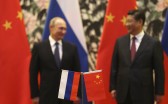
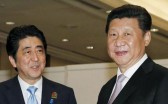
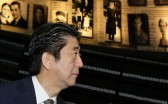
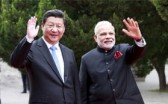
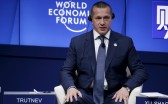
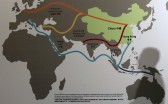


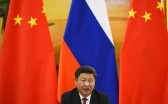
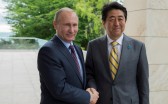
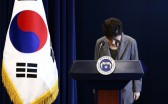
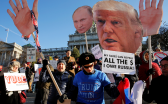
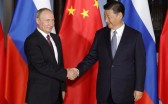
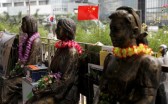
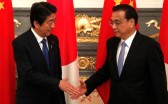
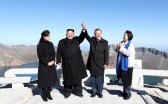
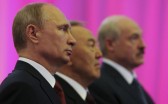
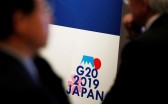



 Print
Print Email
Email Share
Share Facebook
Facebook Twitter
Twitter LinkedIn
LinkedIn